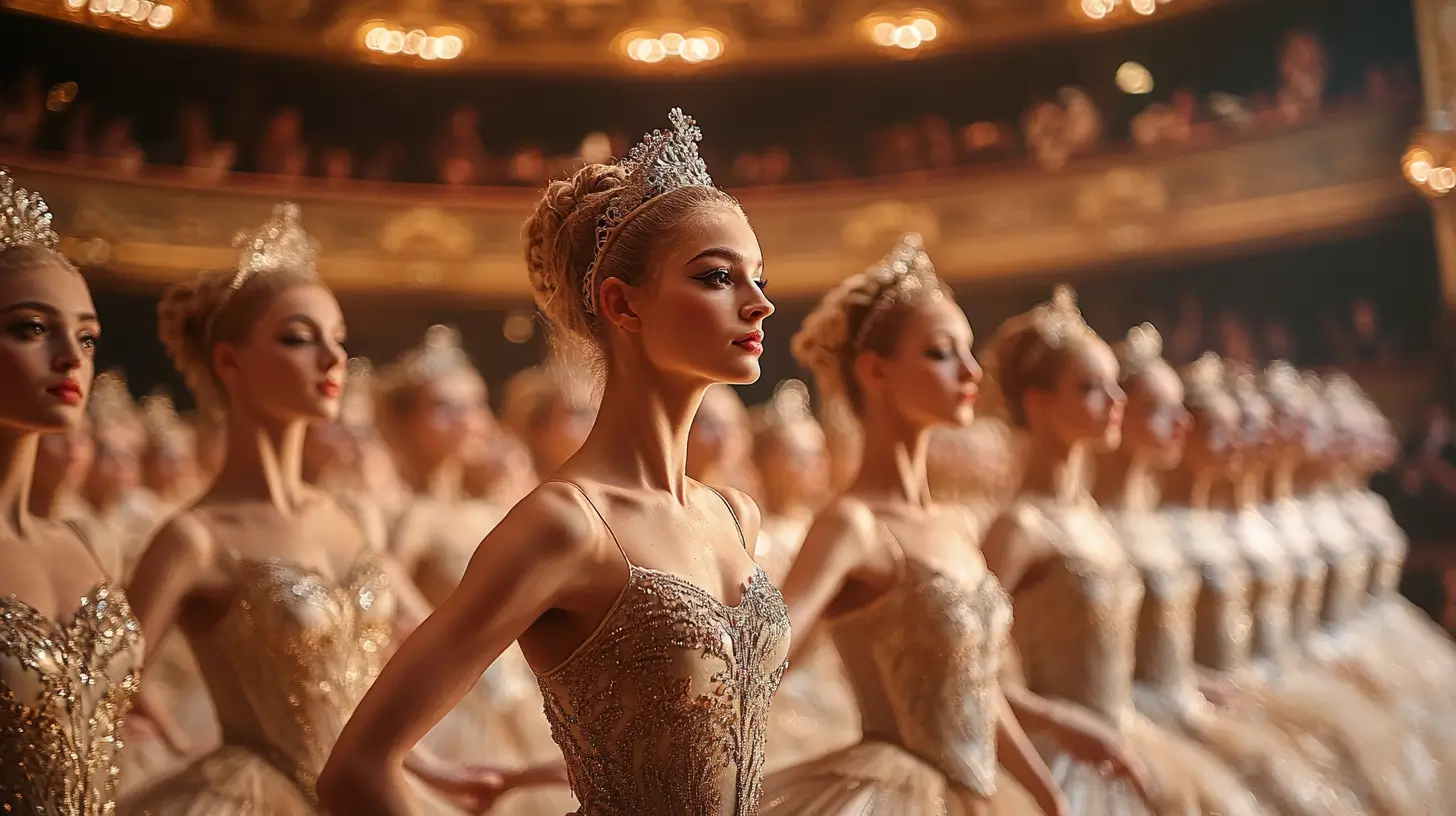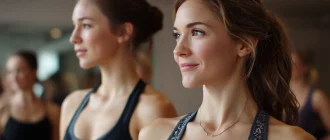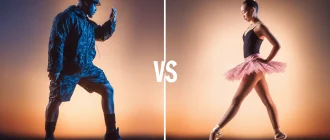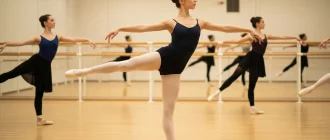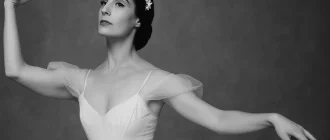The Paris Opéra Ballet, founded in 1661, is the world’s oldest national ballet company. Celebrated for its historical significance and top-tier artistry, it has greatly influenced ballet. Tracing its origins back to the establishment of the Académie Royale de Musique in the late 17th century, the Paris Opéra Ballet played a crucial role in the historical evolution of the Paris Opera. This article explores its founding, pivotal eras, and current structure, offering a deep dive into this esteemed institution.
Graceful Insights
- The Paris Opéra Ballet, founded in 1661 under King Louis XIV, is the world’s oldest national ballet company, known for its continuous commitment to excellence and the evolution of ballet techniques.
- Key figures such as Serge Lifar and Rudolf Nureyev significantly influenced the company’s artistic direction, enhancing its international reputation and pushing creative boundaries.
- The Paris Opéra Ballet School, with a competitive admission rate, trains future dancers, ensuring the legacy of high-caliber performances through rigorous education and structured advancement within the company.
Paris Opéra Ballet Podcast
| Aspect | Details |
|---|---|
| Founded | 1669 (as part of the Académie d’Opéra, then officially became Paris Opéra Ballet in 1713) |
| Location | Paris, France |
| Venue | Palais Garnier and Opéra Bastille |
| Style | Classical and Neoclassical ballet with a focus on innovative and traditional choreography |
| Training Academy | Paris Opéra Ballet School (École de Danse de l’Opéra de Paris) |
| Signature Works | La Sylphide, Giselle, Don Quixote, The Nutcracker, and Swan Lake |
| Notable Choreographers | Jean-Georges Noverre, Marius Petipa, Serge Lifar, Rudolf Nureyev, Maurice Béjart |
| Current Artistic Director | José Martinez (as of the latest information) |
| Company Size | Approximately 150 dancers, with ranks from Corps de Ballet to Etoile (Principal Dancer) |
| Noteworthy Productions | Annual presentations of classical ballet, modern ballet works, and original creations by guest choreographers |
| Awards and Accolades | Recognized internationally for its technical precision and innovative performances |
| Impact on Dance | Known as a trendsetter in ballet, he has influenced global ballet standards, choreography, and aesthetics. |
| Legacy | One of the oldest and most prestigious ballet companies, symbolizing French culture and artistic excellence |
| Annual Auditions | Competitive; open mainly to graduates from the Paris Opéra Ballet School |
| Famous Alumni | Sylvie Guillem, Isabelle Guerin, Laurent Hilaire, Manuel Legris, Marie-Agnès Gillot |
Founding and Heritage of Paris Opéra Ballet: Oldest National Ballet Company

The Paris Opéra Ballet, originally known as the Royal Academy of Dance, was established in 1661 by King Louis XIV. This institution laid the groundwork for what would become the oldest national ballet company in the world. The king’s vision was to elevate ballet to an esteemed art form, setting a high standard for excellence and artistry that continues to this day.
In 1672, the académie Royale de Danse merged with the académie Royale de Musique, forming a more comprehensive institution that significantly influenced European theatrical dance. This merger allowed for a more integrated approach to performance, combining the talents of musicians and dancers under one prestigious umbrella.
During the 18th and early 19th centuries, the Paris Opéra Ballet led the development of classical ballet techniques, especially in jumps and leaps. The early years saw significant contributions from pioneering figures like Pierre Beauchamp, the first ballet master, who established the five fundamental positions of ballet.
Generations of performers have passed down foundational techniques, preserving the Paris Opéra Ballet’s legacy and allowing it to evolve in new artistic directions.
Key Eras in Paris Opéra Ballet History
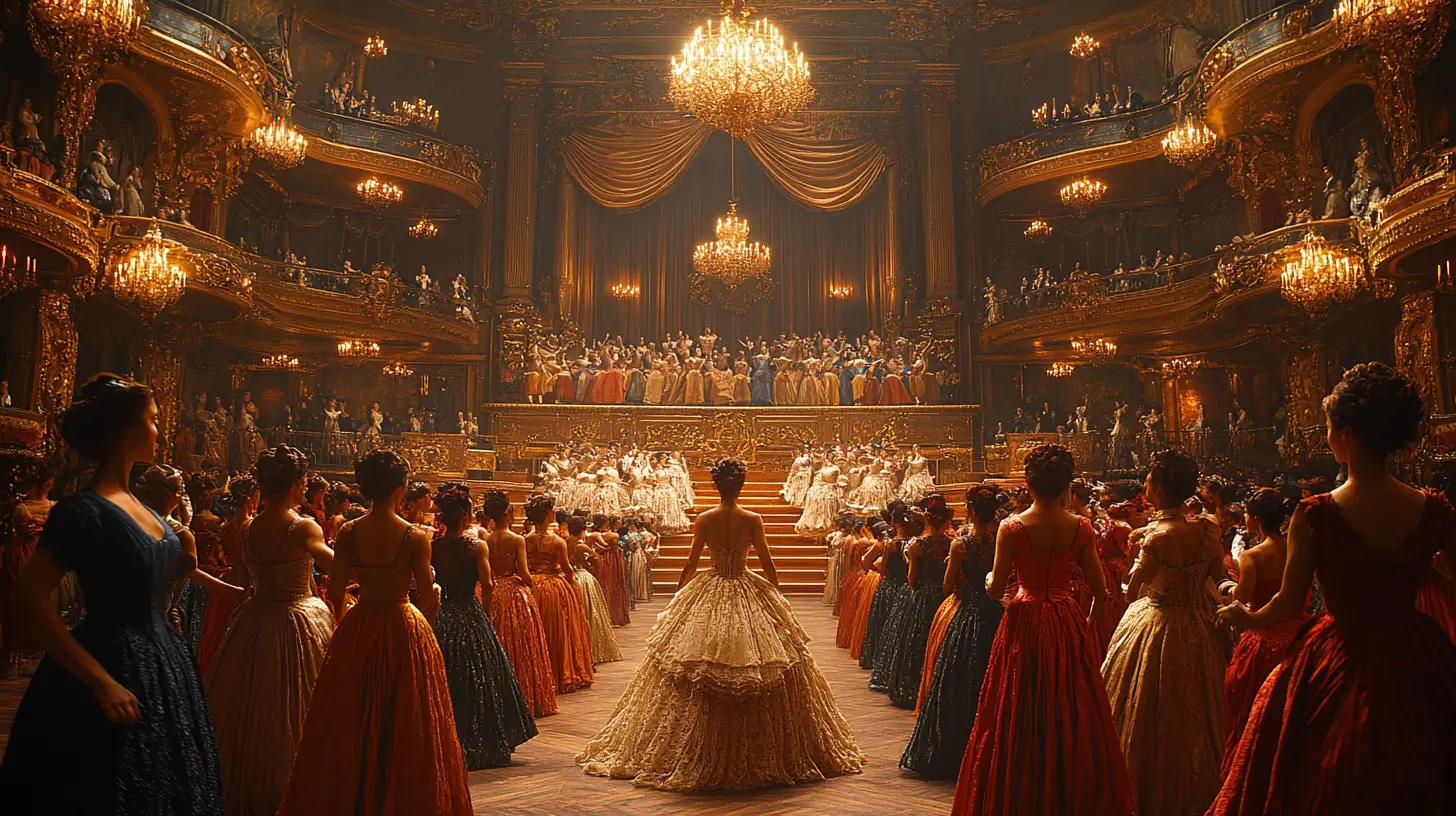
Various key eras, marked by influential directors and significant artistic developments, have shaped the Paris Opéra Ballet. Under Louis XIV’s patronage, the company established a tradition of excellence that has influenced ballet for centuries. This commitment to artistic innovation and high-performance standards has been a hallmark of the ballet’s history.
The Paris Opéra Ballet has undergone numerous transformations, notably under Serge Lifar and Rudolf Nureyev. These periods revitalized the repertoire and expanded its international acclaim. The Lifar Era and Nureyev’s Influence are two such periods that brought profound changes, and they will be explored in detail.
The Paris Opera Ballet’s internal dynamics, including the promotion challenges faced by talented dancers and shifts in leadership, such as Benjamin Millepied’s appointment as director, have also significantly shaped the company’s evolution.
The Lifar Era
The Lifar Era, starting in the 1930s, transformed the Paris Opéra Ballet. Serge Lifar revitalized the company by introducing over 100 new ballets. His visionary leadership redefined the ballet’s style, emphasizing the importance of dance over music, a philosophy evident in his choreography, such as ‘Icare’, which originally featured only percussion.
Lifar’s tenure was marked by significant reforms, including the creation and institution of regular performances and a departure from the tradition of combining ballet with opera. This change enabled the Paris Opéra Ballet to concentrate on dance performances, creating a dynamic schedule that helped the company recover after World War II.
Rudolf Nureyev’s Influence
Rudolf Nureyev’s era, beginning with his 1983 directorship, is often called the golden period for the Paris Opéra Ballet. His tenure elevated its international prestige, characterized by a resurgence in creativity and innovation. Nureyev pushed the boundaries of traditional choreography and expanded the company’s repertoire.
Nureyev’s influence extended beyond the artistic. He was instrumental in elevating the technical standards and performance quality of the Paris Opéra Ballet dancers. His leadership not only solidified the company’s reputation on the global stage but also inspired a new generation of dancers and choreographers to continue the legacy of excellence.
Leadership and Direction
The Paris Opéra Ballet thrives under the expert guidance of its leadership team, which shapes the company’s artistic vision and direction. José Martinez, who assumed the role of Director of Dance in December 2022, is at the helm.
Martinez, a celebrated choreographer and former principal dancer, brings a wealth of experience from his work with leading ballet companies worldwide. His tenure is marked by a commitment to pushing the boundaries of classical ballet and contemporary dance, ensuring that the Paris Opéra Ballet remains at the forefront of the art form.
Supporting Martinez in this endeavor is Alexander Neef, the General Director of the Opéra National de Paris. A distinguished arts administrator, Neef deeply appreciates the Paris Opéra Ballet’s storied history and tradition.
His collaboration with Martinez ensures that the company’s productions maintain the highest artistic standards while continuing to innovate and evolve. Together, they steer the Paris Opéra Ballet towards new creative heights, honoring its legacy while embracing the future.
Paris Opéra Ballet School
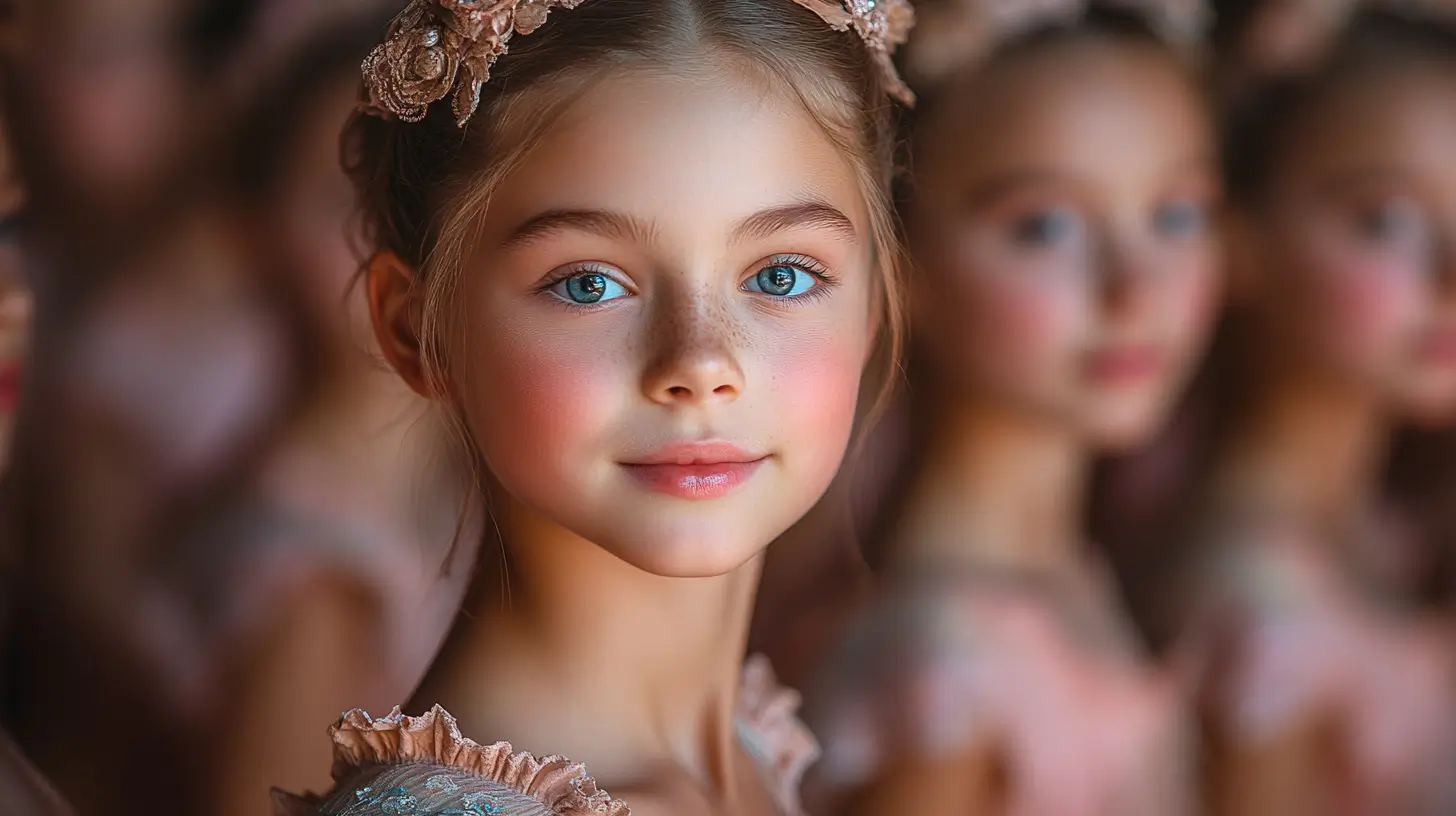
Renowned for its rigorous training and high standards, the Paris Opera Ballet School incubates future dancers with six levels of dance instruction, each building on the last to ensure comprehensive ballet education.
The school produces a significant percentage of the dancers in the Paris Opéra Ballet, making entrance to the ballet company virtually mandatory for its students. The mission of the separate academy is to cultivate the next generation of dancers to uphold the Paris Opéra Ballet’s prestigious legacy.
Admission to the school is highly competitive, with a pass rate of less than 10%. Approximately 95% of the admitted dancers are French, reflecting the school’s deep roots in national cultural heritage. The intense competition ensures that only the most dedicated and talented individuals join the ballet’s future.
The Junior Ballet, which includes young dancers typically aged 17 to 23, is integral to the training process. These dancers often come from diverse backgrounds, bringing a rich mix of experiences to the company. In September 2025, six new dancers will join the Junior Ballet, ready to embark on their journey to becoming part of the Paris Opéra Ballet.
Structure of the Company
The Paris Opéra Ballet has a hierarchy of five ranks: Danseur Étoile, Premier Danseur, Sujet, Coryphée, and Quadrille, ensuring well-organized roles and progression for each dancer. The company comprises 154 Paris Opera Ballet dancers, most of whom are graduates from the Paris Opéra Ballet School, creating a youthful ensemble with an average age of around 25.
The Paris Opera Ballet’s internal dynamics often present promotion challenges for talented dancers, leading some, like Mathilde Froustey, to seek better opportunities elsewhere.
The upcoming Ballet promotion competition, set for November 16, 2024, at the Palais Garnier, is crucial for dancers aspiring to climb the ranks. Internal promotions reflect the company’s dedication to nurturing and advancing its talent.
The Étoiles
The Étoile rank represents the pinnacle of achievement within the Paris Opéra Ballet. Awarded based on exceptional performances and the recommendation of the Director of Dance, it is the highest honor a dancer can attain. This elite group of dancers embodies the artistic excellence and technical prowess that the Paris Opéra Ballet is renowned for.
The Paris Opera Ballet’s internal dynamics often present promotion challenges for talented dancers, leading some, like Mathilde Froustey, to seek better opportunities elsewhere. Shifts in leadership, such as Benjamin Millepied’s appointment as director, have aimed to address these longstanding issues within the company.
Rudolf Nureyev’s directorship significantly expanded and elevated the Paris Opéra Ballet’s international prestige. Nureyev’s innovative approach and high-performance standards helped cement the company’s reputation as one of the leading ballet companies globally.
Corps de Ballet
The Corps de Ballet forms the backbone of any ballet company, including the Paris Opéra Ballet. Dancers are selected through an annual competition, ensuring that only the most talented and dedicated individuals join the ranks. This rigorous selection process maintains the high standards of performance that the company is known for.
The Paris Opera Ballet’s internal dynamics often present promotion challenges for talented dancers, highlighting issues such as those faced by former dancers like Mathilde Froustey, who left seeking better opportunities, and shifts in leadership, such as Benjamin Millepied’s appointment as director, which promised changes to these longstanding issues within the company.
Applications for the 2024 recruitment competition have now closed, but the anticipation builds for the upcoming Ballet promotion competition on November 16, 2024. These competitions are critical in identifying and nurturing the next generation of ballet dancers, ensuring the continued excellence of the Paris Opéra Ballet.
Recent Developments and Promotions
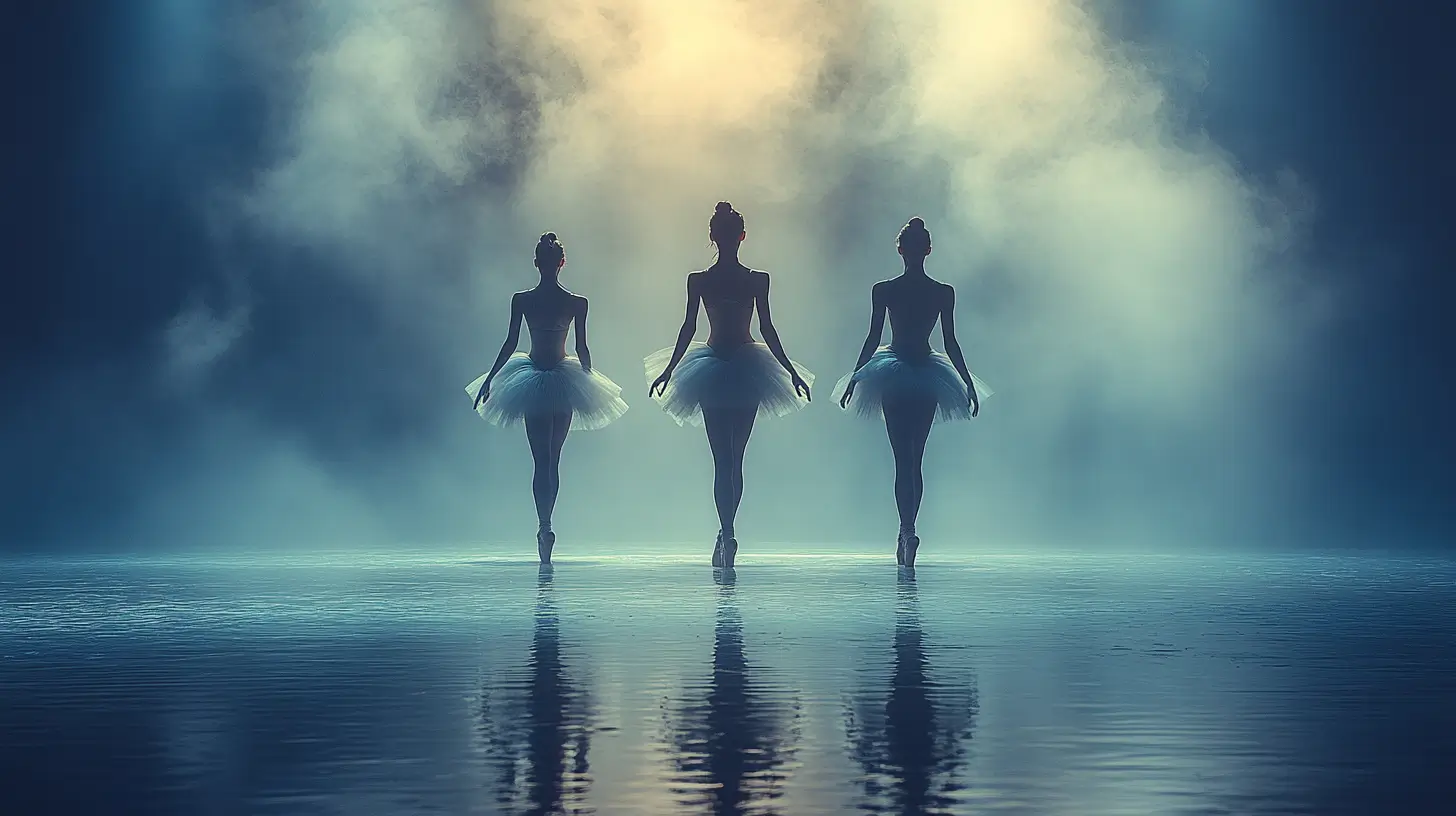
Constantly evolving, the Paris Opéra Ballet’s recent updates reflect its dynamic nature. The company has planned a varied schedule of performances for the upcoming months, showcasing the exceptional talent of its dancers. Regular updates on the schedule ensure that audiences are kept informed about the latest shows and events.
These developments are part of the ballet’s ongoing efforts to refresh its productions and maintain its position at the forefront of the dance world. The commitment to artistic excellence and innovation continues to drive the Paris Opéra Ballet’s success.
Laura Hecquet’s Retirement
Laura Hecquet, a prominent étoile dancer, recently retired, marking the end of an illustrious career. Her retirement on October 10, 2024, was significant for the company and its fans. Hecquet’s exceptional talent and contributions to the ballet have left an indelible mark on the company’s history.
Her farewell performance was a fitting tribute to her career. It celebrated her achievements and her impact on the Paris Opéra Ballet. It was a night of reflection and celebration, honoring one of the company’s brightest stars.
New Premiers Danseurs
The Paris Opéra Ballet recently appointed Thomas Docquir and Jack Gasztowtt as new Premiers Danseurs, demonstrating exceptional talent and dedication.
These appointments testify to the ballet’s commitment to nurturing and promoting its talented dancers. As first soloists, Docquir and Gasztowtt will play crucial roles in upcoming productions, continuing the Paris Opéra Ballet’s legacy.
Artistic Collaborations
The Paris Opéra Ballet’s rich history is punctuated by numerous artistic collaborations with some of the world’s most esteemed choreographers, dancers, and artists. These partnerships have been instrumental in creating some of the company’s most successful productions.
Renowned choreographers like William Forsythe, Angelin Preljocaj, and Saburo Teshigawara have contributed to the ballet’s repertoire, bringing fresh perspectives and innovative choreography. Notable productions such as “The Seasons’ Canon” and “Frôlons” are testaments to the creative synergy that these collaborations foster.
Beyond individual artists, the Paris Opéra Ballet also partners with other leading ballet companies and arts organizations globally. Collaborations with the Royal Ballet in London and the New York City Ballet have led to the co-production of new works and the sharing of artistic resources.
These international partnerships enhance the Paris Opéra Ballet’s repertoire and promote a sense of community and shared purpose among the global ballet community. Through these collaborations, the Paris Opéra Ballet continues to elevate the art of ballet and inspire audiences worldwide.
Education and Outreach
Education and outreach are cornerstones of the Paris Opéra Ballet’s mission, reflecting its commitment to nurturing the next generation of dancers and making ballet accessible to a wider audience. The Paris Opéra Ballet School, one of the world’s premier dance institutions, plays a pivotal role in this mission.
The school’s faculty includes some of the most esteemed dance teachers and choreographers. It offers rigorous training programs that prepare young dancers for professional careers. The success of its graduates, many of whom become renowned dancers, underscores the school’s excellence in dance instruction.
In addition to its training programs, the Paris Opéra Ballet engages in various outreach activities designed to promote ballet and engage with the community. Workshops, masterclasses, and performances in schools and community centers bring the art of ballet to diverse audiences, fostering a deeper appreciation for the art form.
The company also provides educational resources, including DVDs, books, and online tutorials, to help individuals learn more about ballet and develop their dance skills. Through these initiatives, the Paris Opéra Ballet ensures that ballet’s beauty and discipline are accessible to people of all ages and backgrounds, continuing its legacy of excellence and inclusivity.
Upcoming Performances
The Paris Opéra Ballet’s upcoming performances promise to captivate audiences with artistic brilliance. From classical ballets to contemporary masterpieces, the company’s schedule is packed with must-see shows performed at the opéra National de Paris and the Paris Opera. Ticket options are varied, with subscriptions and discounts available for young audiences, making the Paris Opera Ballet accessible to a broader demographic.
These performances testify to the Paris Opéra Ballet’s dedication to showcasing the highest dance standards. Each show is an opportunity to witness the exceptional talent and artistry of the company’s dancers.
Giselle
The highly anticipated production of ‘Giselle’ will feature some of the company’s most renowned dancers. This classic ballet tells a hauntingly beautiful story of love and betrayal, brought to life by the exceptional talent of the Paris Opéra Ballet dancers.
For those unable to attend in person, ‘Giselle’ will also be available for online viewing, allowing a global audience to experience this masterpiece. This production is set to be a season highlight, captivating audiences with emotional depth and technical brilliance.
Swan Lake
Another highlight of the Paris Opéra Ballet’s upcoming season is the performance of Rudolf Nureyev’s version of Swan Lake. This iconic ballet, known for its enchanting music and dramatic choreography, will feature prominent dancers from the Paris Opéra Ballet. The production promises a mesmerizing experience showcasing this beloved ballet’s timeless allure.
For those who cannot attend in person, online viewing options will be available, ensuring that the magic of ‘Swan Lake’ reaches a wider audience. This accessibility underscores the Paris Opéra Ballet’s commitment to making its performances available to ballet enthusiasts worldwide.
Behind the Scenes
The magic of the Paris Opéra Ballet extends beyond the stage, with a rich array of behind-the-scenes activities that offer a deeper insight into the world of ballet. The company provides access to documentaries that delve into the intricate process of creating a ballet, from the initial choreography to the final performance. These behind-the-scenes documentary glimpses reveal the dedication and hard work that go into every production.
Public access to rehearsals is another unique offering, allowing audiences to see the dancers’ preparation and the collaborative effort required to bring a ballet to life. These rehearsals showcase the intense training and artistry of the dancers, providing a fascinating look at the discipline and passion that define the Paris Opéra Ballet.
Filmed Rehearsals
Filmed rehearsals provide an intimate look at the preparation and performance techniques of the star Paris Opéra Ballet dancers. These recordings highlight notable dancers’ artistry and the collaborative nature of ballet. The rehearsals are a testament to the hard work and dedication that go into each performance, showcasing the detailed process behind successful productions.
Filmed sessions allow audiences to appreciate the finer aspects of choreography and the dancers’ commitment to their craft. By opening up this aspect of their world, the Paris Opéra Ballet provides a unique and educational experience that enhances the appreciation of their performances.
Paris Opéra Ballet Venues: Palais Garnier
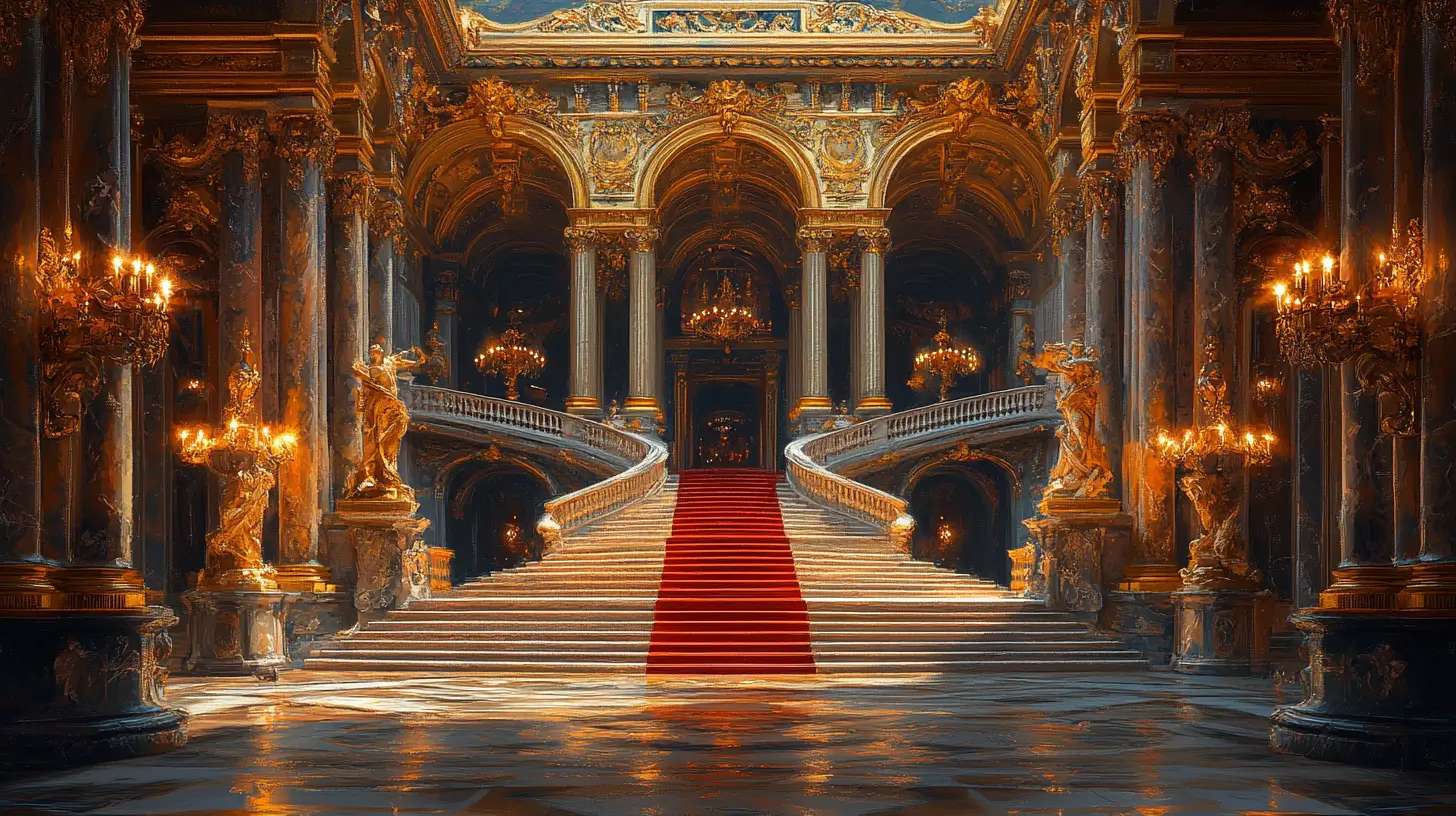
The Paris Opéra Ballet’s venues are iconic, much like the performances. The Palais Garnier, with its grand horseshoe-shaped auditorium, provides an unparalleled setting for ballet productions.
The stunning ceiling painted by Marc Chagall and the magnificent chandelier add to the venue’s historical and artistic significance. The Grand Foyer, with its opulent mirrors and painted ceiling, creates a visually striking atmosphere for audiences before and after performances.
In contrast, the Opéra Bastille, opened in 1989, represents a more modern architectural approach. Designed by Carlos Ott, this venue is known for its impressive scale and contemporary design.
The Palais Garnier and Opéra Bastille offer diverse settings for the Paris Opéra Ballet’s productions, enriching Paris’s cultural landscape. These venues are not just stages for performances; they are integral parts of the Paris Opéra Ballet’s rich heritage and continue to play a crucial role in its ongoing story.
Ticketing and Attendance Tips
Due to high demand, securing tickets for the Paris Opéra Ballet’s performances requires some planning. Early booking is highly recommended to avoid disappointment and ensure better seating options. Tickets can be conveniently purchased online through the official website, which also offers early booking reminders for registered users.
For last-minute options, a secondary site allows ticket holders to resell extra tickets, which can be a viable option for sold-out shows. Additionally, discounted same-day tickets may be available for seniors and individuals under 28. Arriving early is advisable, as lines can form well in advance. Ticket cancellation and exchange insurance provide flexibility if plans change.
Resume
The Paris Opéra Ballet is a testament to the enduring power of dance and the arts. From its storied history and influential eras to its rigorous training school and dynamic company structure, the ballet inspires and captivates audiences worldwide.
As you plan your visit or tune in for an online performance, remember that each show culminates centuries of tradition, innovation, and artistic excellence. Embrace the magic of the Paris Opéra Ballet and let its legacy enrich your appreciation of the arts.
FAQ
How far in advance can I buy Paris Opera Ballet tickets, and what are the main sales channels?
Single tickets usually open to the general public about six months before each performance, while subscribers and Friends of the Opera enjoy priority booking up to two weeks earlier. Seats can be purchased online through the Opera’s ticketing portal or mobile app, by phone, or in person at the Palais Garnier and Opéra Bastille box offices.
Are there discounted or last‑minute rates for students, under‑28s, or seniors?
Yes. Audience members under 28 can grab €10 “Avant‑Première” seats and day-of-show tickets at reduced prices. Spectators over 65, job seekers, and holders of certain disability cards receive 30–50 percent off remaining seats at the box office beginning 30 minutes before curtain.
Is there a specific dress code for attending a performance at Palais Garnier or Opéra Bastille?
The Opera asks patrons to wear neat, respectful attire. Eveningwear is encouraged for galas—dark suits for gentlemen, cocktail or long dresses for ladies—but jackets and smart casual outfits are perfectly acceptable on regular nights. Jeans, shorts, sportswear, and flip‑flops may be refused at the door.
What accessibility services are offered for patrons with disabilities?
Both theaters provide step‑free entrances, wheelchair positions, accessible restrooms, and complimentary loaner wheelchairs with advance notice. Guide and service dogs are welcome, and a dedicated Accessibility Service arranges companion seating and 30 percent ticket discounts for eligible guests.
Can I take a backstage or architecture tour of the theaters?
Guided daytime tours of the historic Palais Garnier and the modern Opéra Bastille run year‑round, featuring auditorium access, the Grand Staircase, and temporary exhibitions. Tours sell out quickly in peak season, so booking online a few weeks ahead is recommended.
How do I stream Paris Opera Ballet productions if I can’t travel to Paris?
The Opera’s video platform, POP (Paris Opera Play), offers live streams and an on‑demand catalog of full‑length ballets in HD. Subscriptions are month‑to‑month, include a seven‑day free trial, and support casting to smart TVs via AirPlay or Chromecast.
What is the company’s internal ranking system for dancers?
Dancers advance through five permanent ranks—Quadrille, Coryphée, Sujet, Premier Danseur/Première Danseuse, and Danseur Étoile/Étoile—by annual internal competition or appointment. Étoile is the highest title awarded by the director onstage after an exceptional performance.
How do professional dancers audition for the Paris Opera Ballet?
The company holds a public competition each spring at the Palais Garnier. Applicants aged 16–26 submit credentials, then complete class work and solo variations before a jury. Video submissions and private auditions are not accepted; all hiring flows through this annual concours.
What is the Paris Opera Junior Ballet, and where can audiences see it?
The Junior Ballet is a separate ensemble of 18–24 dancers aged 17–23 on two‑year professionalization contracts. It tours nationally and internationally from May through August and appears in special mixed bills at the Opera’s studios and partner festivals.
Does the Ballet School run summer programs for young dancers?
Yes. The two‑week Summer School invites students aged 10–19 worldwide to train with faculty and pianists from the Paris Opera Ballet School. Applications open each December and require photos in arabesque and relevé, plus a short video class excerpt.
Can the public watch the company class or rehearsals?
Each December, the Ballet presents an onstage public class and an open rehearsal at Opéra Bastille. Additional public rehearsals for upcoming ballets are scheduled throughout the season in the Amphithéâtre Olivier Messiaen; tickets cost €10–25 and sell out quickly.
When do the lobby doors open, and what happens if I arrive late?
Doors typically open 45 minutes before the curtain. Once the performance starts, latecomers must wait until the first scene change or intermission to enter and will be seated in available locations to avoid disturbing performers and the audience.
Are children welcome at Paris Opera Ballet performances?
Children aged six and older may attend standard performances, while dedicated “Jeune Public” events cater to families with reduced prices starting at €5. For evening shows, children under 14 must be accompanied by an adult, and very young children may be asked to leave if they become disruptive.
In which languages are program booklets and surtitles provided?
Printed and digital program booklets are bilingual in French and English. When surtitles are used—for example, in narrative ballets or mixed‑media works—they appear in the same two languages.
Where can I buy official Paris Opera Ballet merchandise?
The Opera Boutique inside Palais Garnier and the online shop stock posters, pointe shoes worn onstage, jewelry, and limited‑edition collaborations. Shoppers receive a VAT refund form upon request for purchases over the legal threshold.
Which seating categories offer the best view for ballet at Palais Garnier?
“Optima” and Category 1 seats in the Orchestra and first‑row Balcony deliver the clearest sightlines to footwork and formation. In contrast, Category 3‑5 boxes on the sides provide an intimate view of dancers’ expressions at a lower price point.
When is the new ballet season announced, and how can I plan a trip around it?
The Opera unveils the following year’s season in late March, with complete casting and calendars online by early April. If you aim to attend blockbuster story ballets like Swan Lake or The Sleeping Beauty, focus on winter and spring dates; contemporary triple bills are concentrated in autumn and early summer.
How long do performances last, and how many intervals should I expect?
Most full‑length classics run 2 hours 30 to 3 hours 10, including two 20‑minute intervals. One‑act modern pieces last 30–40 minutes, and mixed programs generally total about 2 hours with one intermission. Exact timings are posted on each production’s web page.
May I photograph or record the show?
Photography, filming, and audio recording are strictly prohibited inside the auditorium. Mobile phones must be switched off or set to airplane mode; illuminated screens during the performance may lead to removal by ushers.
What options exist if I need to exchange or resell my ticket, or if I wish to support the Ballet?
The Opera operates an official ticket‑exchange platform that allows resale at face value plus a small handling fee. For deeper involvement, the AROP Friends program offers membership levels starting at €90 a year, providing priority booking, rehearsal access, and tax‑deductible support for new productions and scholarships.

